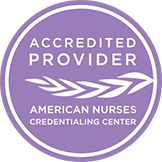De-escalation techniques are approaches for calming down a person who is agitated or aggressive. These techniques focus on managing the situation, not winning an argument. Various de-escalation techniques should be used before requesting restraint orders. Depending on what is driving the behavior changes, it may be possible to observe subtle escalation and stop it before it gets dangerous. There are recognized phases of escalating aggression, which include (University of Sydney Matilda Center, n.d.):
- Trigger phase: The trigger phase is the initial stage where the patient experiences stress or anxiety, or an initial event triggers the patient. The initial signs are subtle and can include increased awareness, muscle tension, and increased heart rate.
- Escalation phase: The escalation phase involves increased aggressive behavior that is more obvious to those around the patient (e.g., clenched fists, arms crossed, rapid speech, sarcastic comments, etc.).
- Crisis phase: The crisis phase is the peak of violent conduct. At this point, the patient has lost control and is shouting, swearing, and potentially putting others at risk of harm.
- De-escalation phase: The de-escalation phase is when the tension starts to decrease.
- Recovery phase: During the recovery phase, the patient might still be slightly irritated, so it is important to be supportive.
- Post-crisis depression phase. The post-crisis depression phase is when the patient might feel tired or guilty for the outburst. It is important that the CNA be supportive and understanding of the behavior.
It is important to understand that these phases don’t always happen in order. The phases can vary in intensity and duration depending on what is going on (University of Sydney Matilda Center, n.d.). The goal is to recognize the early signs and take them seriously.
When caregivers see increased anxiety or worry, there are several de-escalation techniques that should be used. Active listening is a great technique to use to get to the reason for a patient’s distress (Kaur & McNamara, 2025). When working with patients with special needs, dementia, or other conditions that impact the patient’s ability to express themselves, ensure the patient’s immediate needs are met. Is the patient hungry or thirsty? Does the patient need to use the bathroom or get cleaned up? Is the patient in pain? Pain is a crucial factor to rule out. It can be the whole reason for increased anxiety and agitation. The pain should be treated promptly (Husebo et al., 2022).
If the patient’s immediate needs are met and pain is not an issue, the next thing to consider is the patient’s environment. How could improvements to the environment impact the patient? Some patients respond well to the presence of familiar caregivers. If possible, swap assignments with an aide who is known for getting along with the patient and who might be best able to de-escalate the patient. If it is known that the patient responds well to having a family member present, contact that person and see if arrangements can be made. If staffing permits, advocate for a 1:1 sitter who can observe the patient and intervene as necessary (Kramer & Schubert, 2023).
Some patients respond well to soothing music, familiar television shows, pictures of their loved ones, animal therapy (when possible), or going outside on a nice, comfortable day. Alzheimer's, dementia, and delirium patients can benefit from using a busy board or fidget blanket to aid in distraction and prevent them from pulling on medical equipment (Mosley et al., 2020). It is important to be aware of the resources available in the facility or home setting prior to handling a real-world scenario.






